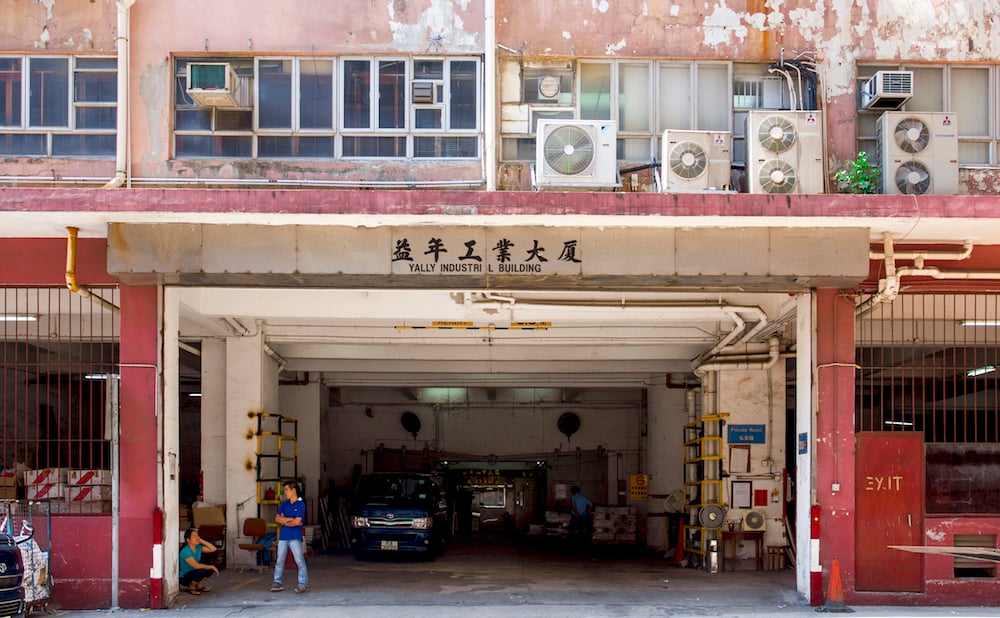
Tensions are high in Hong Kong as residents attempt to come to grips with the passage of a new national security law that makes “subversion” of the government a crime. Sources in the city confirmed that police dispersed protestors with force and made numerous arrests as soon as the law went into effect on July 1.
According to some, the new law amounts to the end of the vibrant city as we know it. One man was reportedly arrested after police found a banner in his bag reading “Hong Kong Independence, the Only Way Out.” Another woman told the New York Times she feared that her neighbors might hear her sons singing the unofficial anthem of the protest movement in their own backyard.
Others, however, argue it is too soon to determine whether this new state of affairs will harm Hong Kong’s status as the leading art hub in Asia. Many dealers we spoke to were reluctant to make predictions until it became more clear how the law, which went into effect last week, will be enforced. But there is at least one sign that dealers aren’t giving up on the city just yet. Instead, they’ve been shifting their strategy.
A growing number of galleries are moving out of their swanky gallery spaces in the city center, particularly those in the Pedder Building, which is home to blue-chip names like Gagosian, Lehmann Maupin, and Pearl Lam. Instead, they are setting up shop in larger spaces outside the city center, often for far less money.
Lured by an increasingly vibrant gallery community, many international and Asian galleries have landed in Wong Chuk Hang, a still-gritty but fast-growing area on the south side of Hong Kong Island, near the South China Sea. Even in heavy traffic, the ride to the neighborhood—which has long been home to a vibrant community of artists, architects, designers, local galleries, and art-storage spaces—rarely tops 30 minutes from Central.
Ben Brown Fine Arts new space in Wong Chuk Hang. Image courtesy of Ben Brown Fine Arts.
It was French gallery owner Pascal de Sarthe who first led the way for international galleries three years ago by moving to Wong Chuk Hang from Central, one of the most expensive real estate areas in the world.
“The most important factor in deciding to move was that we did not feel a sense of belonging to an art community,” de Sarthe said. “Until now, the thought that ‘you have to be in Central’ prevailed. The new economics are making the art world rethink their operations and I am starting to hear that some Central Hong Kong galleries want to move to this burgeoning ‘Hong Kong Arts District.'”
British dealer Ben Brown, whose gallery was the first to take up space in the Pedder Building a decade ago, was easily convinced. With his lease set to expire and his attempts to negotiate with his landlord seeming to fall on deaf ears, Brown recently moved to a larger space in Wong Chuk Hang, not far from de Sarthe. His monthly rent per square foot is roughly an eighth of this Pedder rent, he told Artnet News. He likened the industrial area, which is near wealthy residential neighborhoods, to “the ramp near the Upper East Side” in New York.
More recent transplants to Wong Chuk Hang include Belgian dealer Axel Vervoordt, who last year joined the photography-centered Blindspot Gallery and black box space Empty Gallery. The community is now home to about 16 galleries in all.
Installation view of “Contemporary Show Off” for “South Side Saturday” at de Sarthe in Wong Chuk Hang. Image courtesy of de Sarthe and the artists.
Without the pressure of such high rents, “you can build a more ambitious program,” said longtime Hong Kong resident Fabio Rossi of Rossi & Rossi gallery, which opened a project space in the area in early 2015. “People who come to the South Side are seeing something different, more edgy and exciting.”
Rossi and several fellow members of the Hong Kong Gallery Association in nearby neighborhoods have introduced “South Side Saturday,” for which galleries in the area organize special events one Saturday each month.
As the Hong Kong art scene and economy face unprecedented changes, will others follow suit? The more recently launched and quite lavish H Queens building only opened two years ago, in March 2018, coinciding with that year’s annual Art Basel Hong Kong fair. Tenants, most of whom Artnet News understands signed three-year leases to start, include mega-dealers Hauser & Wirth, Pace, David Zwirner Gallery, Whitestone, and a second space for Pearl Lam.
Perrotin Gallery recently decamped from another building in Central to the eighth floor of a prominent waterfront building that houses K11 Atelier, founded by mega-collector and developer Adrian Cheng, as well as the Rosewood Hotel and Residences. Perrotin is the first gallery to take up residence in Victoria Dockside, a development that is a short drive to the forthcoming M+ museum of visual culture. A Perrotin spokesperson did not immediately respond to a query about what prompted the move. (Unlike in Wong Chuk Hang, the rents do not immediately appear to be much cheaper there than in Central.)
Installation view of “Bae Bien-U: Memories of Wandering,” Axel Vervoordt Gallery Hong Kong.
Image courtesy of the artist and Axel Vervoordt Gallery. Photo: Kitmin Lee
So far, the energy appears to be shifting South. “Some Saturdays remind me of New York, London, or Paris with many people hopping from one gallery to another,” de Sarthe said. What remains to be seen, however, is whether this vibrancy will remain as the impact of the national security law comes into focus.